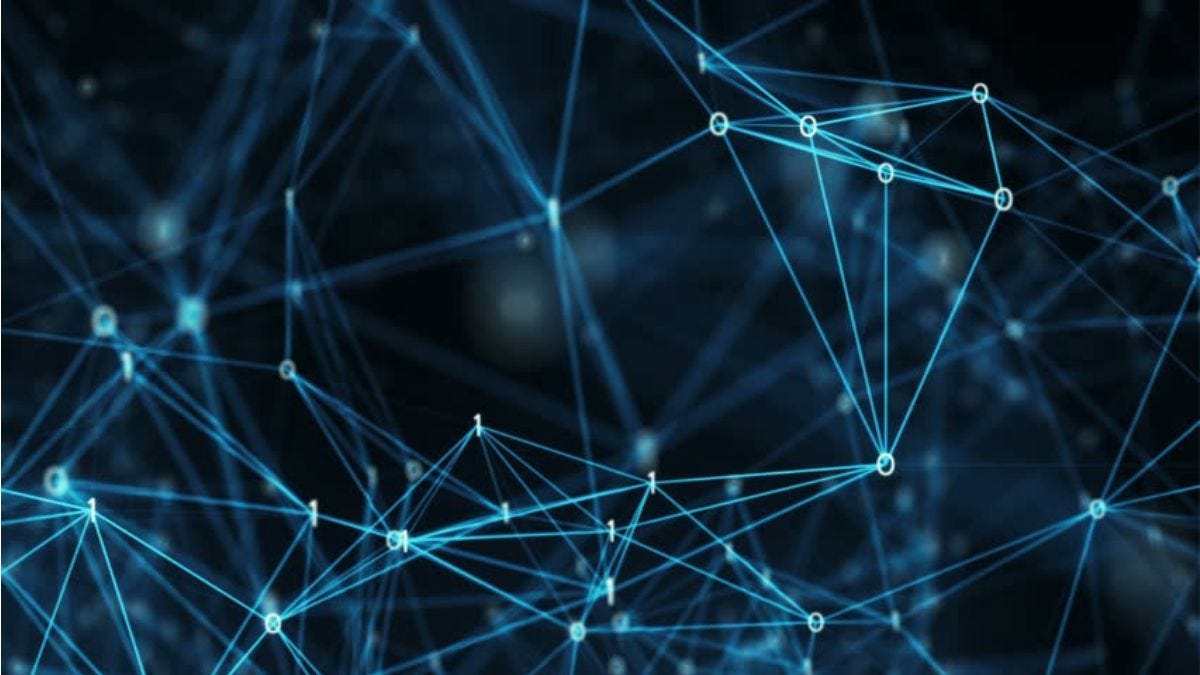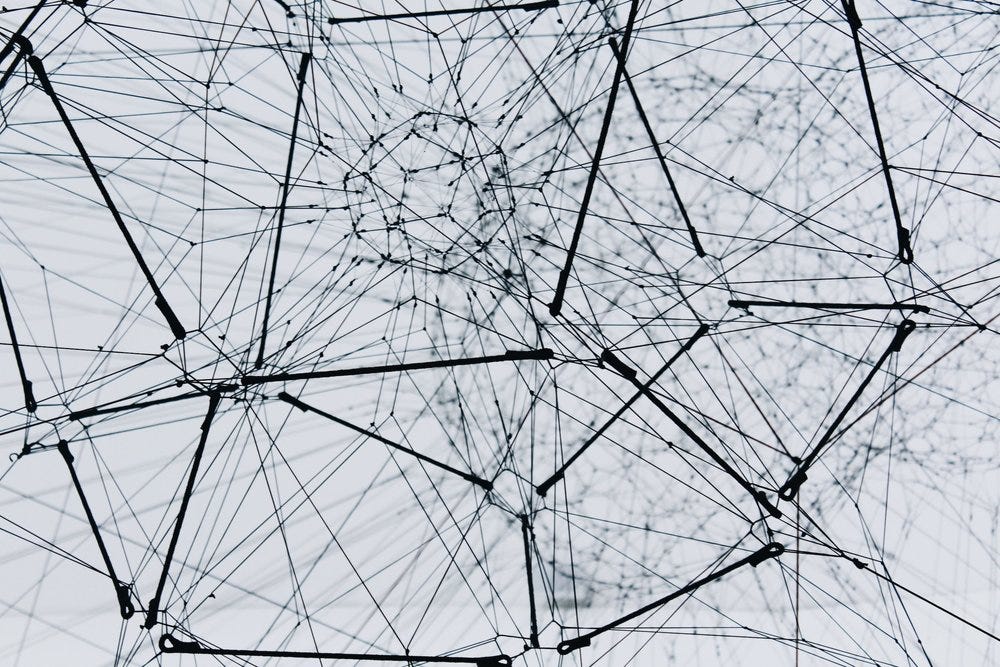Graph Neural Networks: The Missing Link for Massive-scale Healthcare AI
Medicine is inherently multimodal, synthesizing diverse data sources to draw clinical conclusions. If we want to simulate health, we need to build machines the same way.
The demand for AI-driven solutions in healthcare is at an all-time high, promising to revolutionize diagnostics, personalize treatment planning, and accelerate drug discovery. Despite this, we seem to be getting nowhere fast.
Despite significant advancements, healthcare technologists and the medical community still seem to wrestle with poor generalizability and translational barriers in clinical AI applications. The answer to this challenge is likely found in the development process itself. Healthcare AI struggles to effectively model the complex relationships and dynamics present in the multimodal health data. In clinical medicine, physicians gather all sorts of information about patients.
We determine what brings them into the clinic (Stomach ache? Weird mole? A cough?). We conduct a physical exam to collect more data points, in the form of heart and lung sounds, reflexes, pulses, and more. If the occasion calls for it, we might order imaging studies, such as x-rays, CT scans, etc. These represent just a few of the many different types of data used in medicine.
If we want to build powerful AI for the world of medicine, we need AI models that can successfully represent and analyze all of these multimodal data sources together. In computer science, graph data structures are capable of doing this. For that reason, graph neural networks (GNNs) - a branch of AI/ML dedicated to graph data analytics - can play a key role in developing more robust and valuable predictive models for patient care. And yet, they are hardly found anywhere right now.
Why?
A Graph (shown) is a non-linear data structure consisting of vertices and edges. Social media networks, GPS, Netflix recommendation systems, and even the internet itself all organize information using graphs.
The Current State of Healthcare AI and Its Limitations
Healthcare data is inherently complex, shaped by numerous factors influencing patient outcomes from diverse sources. In fact, some estimate that up to 80% of traditional health outcome metrics are determined by factors outside the hospital walls. Patient health is essentially a composite of genetic, environmental, lifestyle, and social factors. Moreover, healthcare data is multimodal, with diverse data types contained in electronic health records (EHRs), medical imaging, genomic information, and wearable device data. Traditional AI models struggle to integrate these diverse data sources and accurately represent the intricate relationships between them.
These challenges inevitably result in clinical AI that falls short, evidenced by:
Inaccurate predictions: Conventional AI models frequently fail to capture the complex dependencies between various factors, resulting in less accurate predictions of patient outcomes, disease progression, and treatment responses.
Poor generalization: Traditional AI models' inability to account for the complex interplay of genetic, environmental, and lifestyle factors often leads to poor generalization across different patient populations and healthcare settings.
Limited interpretability: Many existing AI models, particularly deep learning models, are perceived as "black boxes," making it difficult for healthcare professionals to understand and trust the rationale behind their recommendations.
Inefficient resource allocation: The limitations of current AI models often lead to inefficient allocation of healthcare resources, impacting patient outcomes and the overall efficiency of healthcare systems.
The Far-Reaching Implications of Persisting with Poorly Performing Healthcare AI
The consequences of continuing with the poorly performing paradigm of healthcare AI models we currently espouse extends beyond the immediate challenges we grapple with. As AI plays a larger role in healthcare decision-making, the shortcomings of current models could have far-reaching implications:
Patient safety and well-being: Inaccurate predictions and poor generalization can result in suboptimal treatment decisions, negatively impacting patient safety and well-being.
Hindered progress in personalized medicine: The limitations of traditional AI models impede the development of personalized treatment strategies that account for individual patients' unique genetic, environmental, and lifestyle factors.
Wasted resources and increased costs: Inefficient resource allocation due to poorly performing AI models can lead to increased costs for healthcare providers and payers, further straining the overburdened healthcare system.
Erosion of trust: The limited interpretability of current AI models can undermine trust between healthcare professionals and AI-driven technologies, hampering the adoption and integration of AI in clinical practice.
Perhaps the key to avoiding these pitfalls begins with how we represent the data itself.
The Power of Graph Neural Networks
Graph neural networks (GNNs) offer a powerful and versatile framework for modeling the complexities of healthcare data. By representing data as nodes and relationships as edges, GNNs can effectively model the complex interactions between various factors in healthcare data. This offers several key advantages over traditional AI models:
Integration of multimodal data: GNNs can efficiently integrate heterogeneous data from various sources, such as EHRs, medical imaging, genomics, and wearable devices. This integrated representation allows AI models to capture the complex interactions between different modalities, leading to more accurate and comprehensive models.
Modeling complex relationships: GNNs' ability to model intricate dependencies between various factors, such as patient demographics, medical history, genetic factors, and environmental influences, sets them apart from other AI models. By capturing these complex relationships, GNNs can provide deeper insights into the underlying factors that contribute to health outcomes and disease progression.
Scalability and efficiency: The bulk of current clinical AI applications are built on relational database management systems, which are inflexible and scale poorly by nature. GNNs, however, can effectively scale to large graphs and parallelize computation across multiple processing units. This makes them well-suited for handling the massive datasets common in healthcare, ensuring that AI applications can keep pace with the ever-growing volume of health data.
Interpretability and explainability: The structure of graph networks, along with their ability to model relationships explicitly, often leads to more interpretable models compared to the “black box” phenomenon that causes concern in traditional deep learning approaches. This added model interpretability can help clinicians and patients understand the rationale behind the AI's recommendations, which is crucial in gaining trust and ensuring safe adoption of AI systems in healthcare.
By abstracting and reframing clinical challenges in the context of graph neural networks, we can make better use of the abundant health data already at our fingertips. By simply reframing our approach, we can make significant progress toward more accurate, personalized, interoperable, and effective medical algorithms. GNNs might be the missing puzzle piece that enables personalized medicine, improves patient stratification, powers better disease progression modeling, and accelerates drug discovery and repurposing.
Graph-based Healthcare AI
The potential benefits of incorporating GNNs into healthcare AI applications are immense, but realizing these benefits requires a collaborative effort from the scientific community, healthcare professionals, and AI developers. We must explore the potential of GNNs in healthcare and develop novel techniques to address the unique challenges posed by health data. Healthcare professionals and AI developers embrace these fundamentally unique neural network architectures and implement them in real-world applications will make a tangible impact on patient care.
Graph neural networks offer a more powerful and versatile framework for addressing the complexities of healthcare data. AI applications built for a graphical model paradigm will likely revolutionize healthcare, paving the way for more accurate, personalized, and effective medical care.







